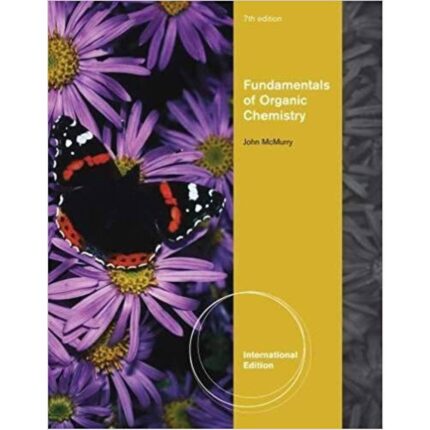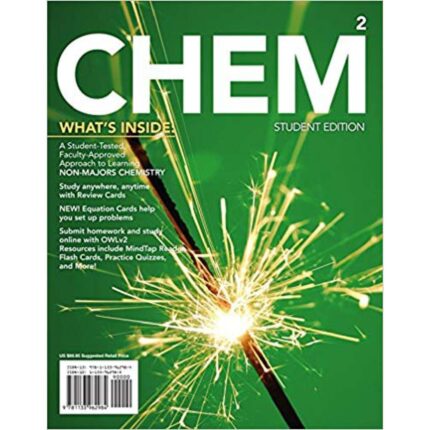6. Which of the following does not involve the interaction of molecules with electromagnetic energy?
a. mass spectrometry
b. infrared spectroscopy
c. ultraviolet spectroscopy
d. nuclear magnetic resonance spectroscopy
ANS: A
7. The amount of energy in electromagnetic radiation is related to the frequency and wavelength of the radiation. High energy radiation, like gamma rays, is of:
a. low frequency and short wavelength
b. low frequency and long wavelength
c. high frequency and short wavelength
d. high frequency and long wavelength
ANS: C
8. The amount of energy in infrared light corresponds to:
a. the amount of energy needed to promote one electron from a bonding to an antibonding molecular orbital
b. the amount of energy needed to fragment a molecule
c. the amount of energy needed to strip a molecule of one electron to generate a cation radical
d. the amount of energy needed to increase certain molecular motions, such as bond vibrations, in organic molecules
ANS: D
9. Examining the infrared spectrum of a compound allows us to:
a. determine the types of functional groups present in the compound
b. determine the carbon-hydrogen framework of the compound
c. determine the molecular weight of the compound
d. determine the nature of the conjugated pi electron system in the compound
ANS: A
Instructions: Match each of the following groups of bond-types to the region of the infrared spectrum in which their absorptions occur.
a. 4000 to 2500 cm1
b. 2500 to 2000 cm1
c. 2000 to 1500 cm1
d. below 1500 cm1
54. Refer to instructions. What is the splitting pattern for the hydrogens in 3-methylbutan-2-one labeled A, B, and C, respectively?
a. singlet, singlet, singlet
b. singlet, septet, quartet
c. singlet, septet, doublet
d. singlet, septet, doublet, doublet
ANS: C
55. Refer to instructions. What is the ratio of peak areas upon integration of the spectrum for A, B, and C respectively?
a. 3:1:3:3
b. 1:1:6
c. 1:1:6
d. 3:1:6
ANS: D
56. Treatment of tert-butyl alcohol with hydrogen chloride yields a mixture of tert-butyl chloride and 2-methylpropene.
a) After chromatographic separation, how would you use 1H NMR to help you decide which was which?
b) How would the 13C NMR for the two compounds differ?
ANS:
a) 2-Methylpropene has two kinds of hydrogens. It has a vinylic absorption (4.56.5 ) representing two hydrogens and an unsplit signal (1.01.5 ) due to the six equivalent methyl hydrogens.
tert-Butyl chloride has only one kind of hydrogen, which results in one unsplit signal.
b) 2-Methylpropene would have three signals with the signals due to the alkene carbons being further downfield than any of the signals in tert-butyl chloride. tert-Butyl bromide would have only two signals.
57. A compound with the molecular formula C6H4ClBr produces only two doublets in the 1H NMR spectrum.
a) Propose a structure for this compound.
b) How many signals would be present in the 13CNMR for this structure?
ANS:













Reviews
There are no reviews yet.